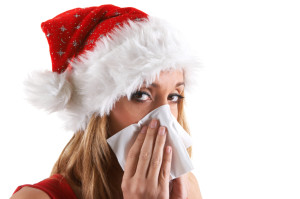 Now that the holiday season is in full swing, it is crunchtime to finish that LOONNGG shopping list. We are all running to and from the malls, shops, grocery stores, etc. But did you know that the mall is a place where the yuckiest germs can live? I have told you about the germs at the grocery store HERE, but have you thought about shopping malls? Take a look compiled from Fox News and rethink where you do your shopping!
Now that the holiday season is in full swing, it is crunchtime to finish that LOONNGG shopping list. We are all running to and from the malls, shops, grocery stores, etc. But did you know that the mall is a place where the yuckiest germs can live? I have told you about the germs at the grocery store HERE, but have you thought about shopping malls? Take a look compiled from Fox News and rethink where you do your shopping!
1. Restroom sinks
The filthiest area in a restroom is the sink. Bacteria, including E. coli, fester on the faucet and handles because people touch those surfaces right after using the toilet. The sink area is a moist environment, so bacteria can survive longer there. Watch out for soap dispensers, too. Liquid soap from refillable dispensers in public bathrooms were found to have unsafe levels of bacteria.
Solution: Wash your hands thoroughly after using a public loo: Lather with soap for at least 20 seconds, then rinse well.
2. Food court tables
Even if you see the table being wiped down, that doesn’t mean it’s clean. Rags that are used to clean tables are not regularly cleaned and can easliy spread harmful bacteria.
Solution: Consider stashing a pack of hard-surface disinfecting wipes that contain alcohol in your purse so you can swipe the table before you sit down.
3. Escalator handrails
You don’t even want to know, but they were found to have food, E. coli, urine, mucus, feces, and blood on them. Think about this, when people cough and then touch a handrail, you are putting their germs on your hands.
Solution: Avoid touching handrails altogether! If you have to, use hand sanitizer immediately afterwards.
4. ATM keypads
After testing 38 ATMs in downtown Taipei, Chinese researchers found that each key contained an average of 1,200 germs, including illness-inducing microbes like E. coli and cold and flu viruses. The worst key of all? The “enter” button, because everyone has to touch it!
Solution: “Knuckle” ATM buttons—you’ll avoid getting germs on your fingertips, which are more likely to find their way to your nose and mouth than your knuckles. And be sure to wash your hands or use sanitizer afterward.
5. Toy stores
Toy stores can actually be germier than play areas, carousels, and other kid-friendly zones because of the way little ones behave there. Kids tend to lick them, roll them around on themselves and more.
Solution: If you make a purchase, wipe down any toy that isn’t in a sealed box or package with soap and water, alcohol, or vinegar before giving it to your child.
6. Fitting rooms
You won’t pick up much from the hooks or the chair. The germ culprit? What you try on. After people try on clothing, skin cells and perspiration can accumulate on the inside and both can serve as food for bacterial growth.
You can even pick up antibiotic-resistant bacteria, such as MRSA (methicillin-resistant Staphylococcus aureus), just by trying on clothes.
Solution: Always wear full-coverage underwear (no thongs!) when trying on clothes, especially pants, bathing suits, and any other garment that touches your genitals or rectum. Wash everything before you wear it!
7. Gadget shops
While you’re playing around on that new smartphone, you could be picking up germs from the thousand people who tested it out before you.
A study published last year in the Journal of Applied Microbiology found that viruses easily transfer between glass surfaces (think iPad or smartphone faces) and fingertips. And a recent report found that of four iPads swabbed in two Apple stores located in New York City, one contained Staphylococcus aureus, the most common cause of staph infections. That’s not even counting the cold and flu germs that might be lurking.
Solution: Before you try out the latest gizmo, quickly wipe it down with a disinfecting wipe. And (yes, once again) use a hand sanitizer after you’re done.
8. Makeup samples
Heading to the makeup counter? A 2005 study found that between 67 and 100% of makeup-counter testers were contaminated with bacteria, including staph, strep, and E. coli.
Solution: Avoid using public makeup samples to apply cosmetics to your lips, eyes, or face. If you must try a sample, ask for a single unit use which you use and throw away. If that’s not available, use a tissue to wipe off the sample and then apply the product to the back of your hand.
Happy Holidays!
-Jessica Brown

















